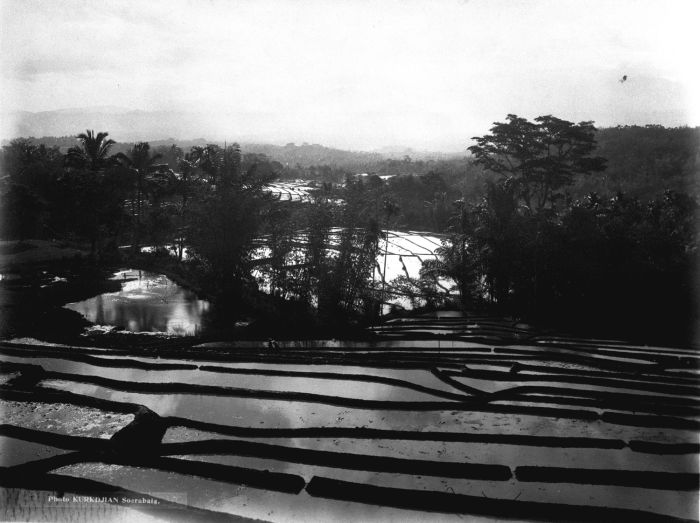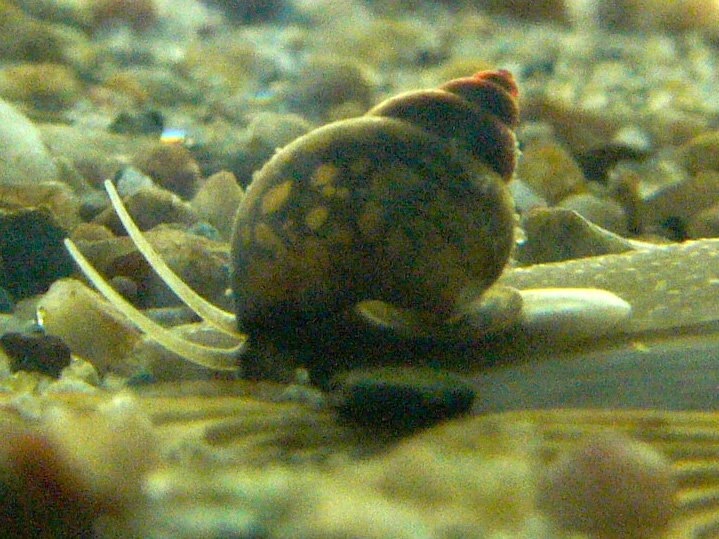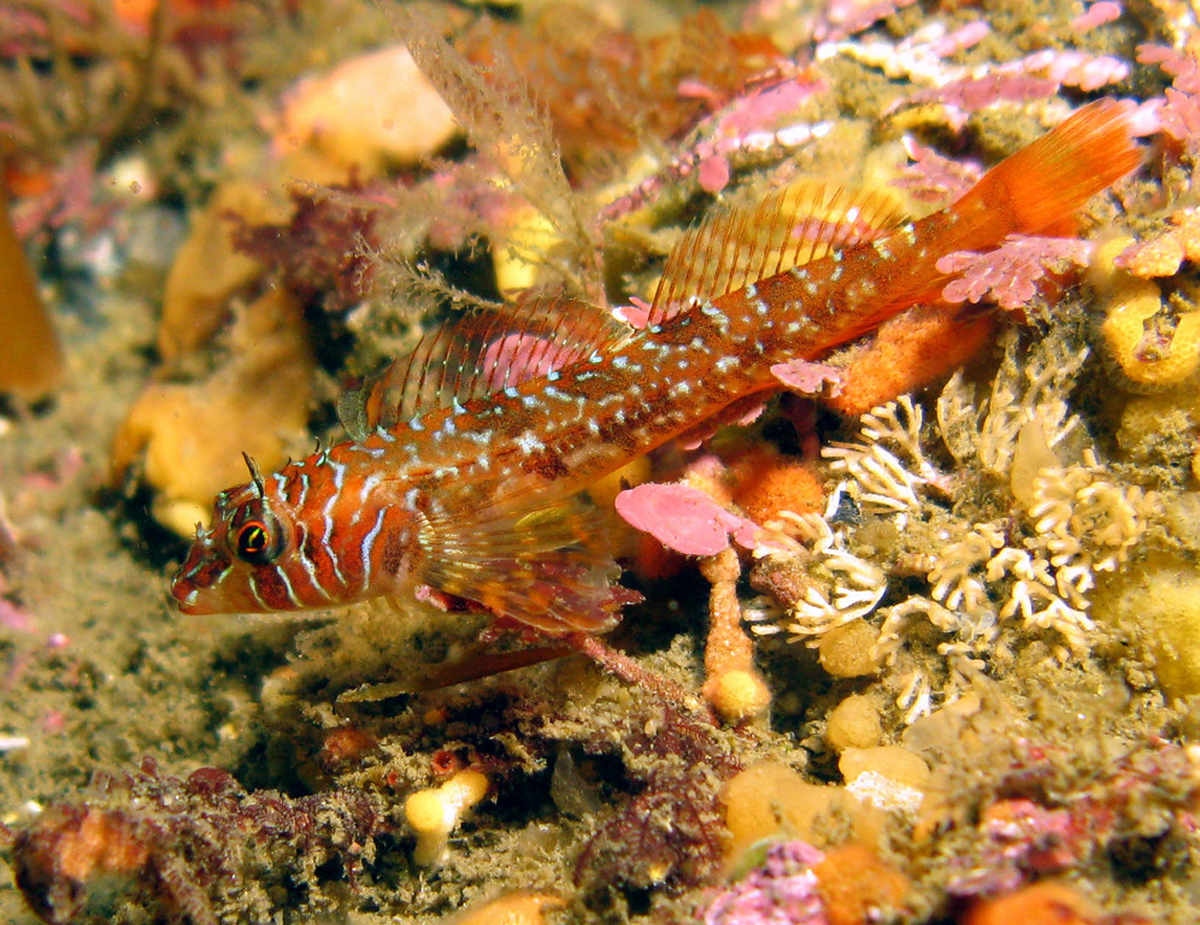|
Sulcospira Testudinaria
''Sulcospira testudinaria'' is a species of freshwater snail with an operculum, an aquatic gastropod mollusk in the family Pachychilidae.Bouchet, P. (2014). ''Sulcospira testudinaria'' (von dem Busch, 1842). Accessed through: World Register of Marine Species at http://www.marinespecies.org/aphia.php?p=taxdetails&id=716910 on 2014-11-08 Distribution This species occurs in: * Java Java (; id, Jawa, ; jv, ꦗꦮ; su, ) is one of the Greater Sunda Islands in Indonesia. It is bordered by the Indian Ocean to the south and the Java Sea to the north. With a population of 151.6 million people, Java is the world's mo ... References * Marwoto R.M. & Isnaningsih N.R. (2012) "The freshwater snail genus ''Sulcospira'' Troschel, 1857 from Java, with description of a new species from Tasikmalaya, West Java, Indonesia (Mollusca: Gastropoda: Pachychilidae)." ''The Raffles Bulletin of Zoology'' 60(1): 1–10. Pachychilidae Gastropods described in 1842 {{Pachychi ... [...More Info...] [...Related Items...] OR: [Wikipedia] [Google] [Baidu] |
Bogor
Bogor ( su, , nl, Buitenzorg) is a city in the West Java province, Indonesia. Located around south of the national capital of Jakarta, Bogor is the 6th largest city in the Jakarta metropolitan area and the 14th overall nationwide. Estimasi Penduduk Menurut Umur Tunggal Dan Jenis Kelamin 2014 Kementerian Kesehatan The city covers an area of 118.50 km2, and it had a population of 950,334 in the 2010 Census and 1,043,070 in the 2020 Census.Badan Pusat Statistik, Jakarta, 2021. The official estimate for mid 2022 is 1,099,422. Bogor is an important economic, scientific, cultural, and tourist center, as well as a mountain resort. During the |
West Java
West Java ( id, Jawa Barat, su, ᮏᮝ ᮊᮥᮜᮧᮔ᮪, romanized ''Jawa Kulon'') is a province of Indonesia on the western part of the island of Java, with its provincial capital in Bandung. West Java is bordered by the province of Banten and the country's capital region of Jakarta to the west, the Java Sea to the north, the province of Central Java to the east and the Indian Ocean to the south. With Banten, this province is the native homeland of the Sundanese people, the second-largest ethnic group in Indonesia. West Java was one of the first eight provinces of Indonesia formed following the country's independence proclamation and was later legally re-established on 14 July 1950. In 1966, the city of Jakarta was split off from West Java as a 'special capital region' (), with a status equivalent to that of a province, while in 2000 the western parts of the province were in turn split away to form a separate Banten province. Even following these split-offs, West J ... [...More Info...] [...Related Items...] OR: [Wikipedia] [Google] [Baidu] |
Von Dem Busch
The term ''von'' () is used in German language surnames either as a nobiliary particle indicating a noble patrilineality, or as a simple preposition used by commoners that means ''of'' or ''from''. Nobility directories like the ''Almanach de Gotha'' often abbreviate the noble term ''von'' to ''v.'' In medieval or early modern names, the ''von'' particle was at times added to commoners' names; thus, ''Hans von Duisburg'' meant "Hans from he city ofDuisburg". This meaning is preserved in Swiss toponymic surnames and in the Dutch or Afrikaans ''van'', which is a cognate of ''von'' but does not indicate nobility. Usage Germany and Austria The abolition of the monarchies in Germany and Austria in 1919 meant that neither state has a privileged nobility, and both have exclusively republican governments. In Germany, this means that legally ''von'' simply became an ordinary part of the surnames of the people who used it. There are no longer any legal privileges or constraints as ... [...More Info...] [...Related Items...] OR: [Wikipedia] [Google] [Baidu] |
Rodolfo Amando Philippi
Rodolfo Amando (or Rudolph Amandus) Philippi (14 September 1808 – 23 July 1904) was a German–Chilean paleontologist and zoologist. Philippi contributed primarily to malacology and paleontology. His grandson, Rodulfo Amando Philippi Bañados (1905-1969), was also a zoologist and in order to avoid confusion in zoological nomenclature, the elder is referred to as "Philippi rumwiede to distinguish him from his grandson "Philippi añados. Early life Philippi was born in Charlottenburg, Berlin to Johann Wilhelm Eberhard Philippi, a Prussian government auditor, and his third wife Maria Anna Krumwiede (m. 1806). The father had five children from two earlier marriages and Philippi was the eldest from the third marriage. In 1818, Philippi, his younger brother Bernhard Eunom (1811–1852) and their mother went to Yverdon-les-Bains, Switzerland, where they were educated at the Pestalozzian Institute founded by Johann Heinrich Pestalozzi (1746–1827). The teaching included the use ... [...More Info...] [...Related Items...] OR: [Wikipedia] [Google] [Baidu] |
Journal Of Molluscan Studies
The ''Journal of Molluscan Studies'' is the peer-reviewed scientific journal of the Malacological Society of London, covering research in malacology.About the journal accessed 6 December 2010. Previous names of this journal include ''Proceedings of the Malacological Society'', and ''Proceedings of the Malacological Society of London'' (abbreviated as ''Proc. Malacol. Soc. Lond.''). Abstracting and indexing The journal is abstracted and indexed byAquatic Sciences and Fisheries Abstracts
[...More Info...] [...Related Items...] OR: [Wikipedia] [Google] [Baidu] |
Mattheus Marinus Schepman
Mattheus Marinus Schepman (17 August 1847 – 19 November 1919) was a Dutch people, Dutch malacologist. He was one of the foremost collectors of mollusc shells in the Netherlands, and was also high on the overall list of European collectors. Dutch collectors developed an interest in natural history specimens that were collected on worldwide expeditions since the 16th century. An interest in conchology led to numerous shell publications. In 1934 the Nederlandse Malacologische Vereniging (Netherlands Malacological Society) was founded. In commemoration of its 75th anniversary, a book honoring in detail the work of Mattheus Schepman was published. His research Schepman was both a collector and a methodical scientist, which combination "made his collection of great value to the entire malacological community." He was given the opportunity to study a collection by Max Carl Wilhelm Weber, Director of the Zoological Museum Amsterdam, Zoölogisch Museum Amsterdam (ZMA). Many of the speci ... [...More Info...] [...Related Items...] OR: [Wikipedia] [Google] [Baidu] |
Notes From The Leyden Museum
''Zoologische Mededelingen'' was a peer-reviewed open access scientific journal publishing papers and monographs on animal systematics. The publisher was the National Museum of Natural History Naturalis in the Netherlands. The first issue appeared in 1915, as the official journal of Naturalis' predecessor, the Rijks Museum van Natuurlijke Historie. Earlier, the museum published ''Muséum d'Histoire Naturelle des Pays-Bas'' (volumes I-XIV, 1862-1908) and ''Notes from the Leyden Museum'' (volumes I-XXXVI, 1879-1914), which mainly covered the fauna of the Netherlands and the former Dutch colonies. ''Zoologische Mededelingen'' was indexed in ''The Zoological Record'' and '' BIOSIS''. A complete backlist of published volumes is presented on the institutional repository of Naturalis. The last article was published in 2014 and the journal was merged into the ''European Journal of Taxonomy The ''European Journal of Taxonomy'' is a peer-reviewed open access scientific journal for descriptiv ... [...More Info...] [...Related Items...] OR: [Wikipedia] [Google] [Baidu] |
Species
In biology, a species is the basic unit of Taxonomy (biology), classification and a taxonomic rank of an organism, as well as a unit of biodiversity. A species is often defined as the largest group of organisms in which any two individuals of the appropriate sexes or mating types can reproduction, produce Fertility, fertile offspring, typically by sexual reproduction. Other ways of defining species include their karyotype, DNA sequence, morphology (biology), morphology, behaviour or ecological niche. In addition, paleontologists use the concept of the chronospecies since fossil reproduction cannot be examined. The most recent rigorous estimate for the total number of species of eukaryotes is between 8 and 8.7 million. However, only about 14% of these had been described by 2011. All species (except viruses) are given a binomial nomenclature, two-part name, a "binomial". The first part of a binomial is the genus to which the species belongs. The second part is called the specifi ... [...More Info...] [...Related Items...] OR: [Wikipedia] [Google] [Baidu] |
Freshwater Snail
Freshwater snails are gastropod mollusks which live in fresh water. There are many different families. They are found throughout the world in various habitats, ranging from ephemeral pools to the largest lakes, and from small seeps and springs to major rivers. The great majority of freshwater gastropods have a shell, with very few exceptions. Some groups of snails that live in freshwater respire using gills, whereas other groups need to reach the surface to breathe air. In addition, some are amphibious and have both gills and a lung (e.g. '' Ampullariidae''). Most feed on algae, but many are detritivores and some are filter feeders. According to a 2008 review of the taxonomy, there are about 4,000 species of freshwater gastropods (3,795–3,972). At least 33–38 independent lineages of gastropods have successfully colonized freshwater environments. It is not possible to quantify the exact number of these lineages yet, because they have yet to be clarified within the Ce ... [...More Info...] [...Related Items...] OR: [Wikipedia] [Google] [Baidu] |
Operculum (gastropod)
The operculum (; ) is a corneous or calcareous anatomical structure like a trapdoor that exists in many (but not all) groups of sea snails and freshwater snails, and also in a few groups of land snails; the structure is found in some marine and freshwater gastropods, and in a minority of terrestrial gastropods, including the families Helicinidae, Cyclophoridae, Aciculidae, Maizaniidae, Pomatiidae, etc. The operculum is attached to the upper surface of the foot and in its most complete state, it serves as a sort of "trapdoor" to close the aperture of the shell when the soft parts of the animal are retracted. The shape of the operculum varies greatly from one family of gastropods to another. It is fairly often circular, or more or less oval in shape. In species where the operculum fits snugly, its outline corresponds exactly to the shape of the aperture of the shell and it serves to seal the entrance of the shell. Many families have opercula that are reduced in size, and which a ... [...More Info...] [...Related Items...] OR: [Wikipedia] [Google] [Baidu] |
Aquatic Animal
An aquatic animal is any animal, whether invertebrate or vertebrate, that lives in water for most or all of its lifetime. Many insects such as mosquitoes, mayflies, dragonflies and caddisflies have aquatic larvae, with winged adults. Aquatic animals may breathe air or extract oxygen from water through specialised organs called gills, or directly through the skin. Natural environments and the animals that live in them can be categorized as aquatic (water) or terrestrial (land). This designation is polyphyletic. Description The term aquatic can be applied to animals that live in either fresh water or salt water. However, the adjective marine is most commonly used for animals that live in saltwater, i.e. in oceans, seas, etc. Aquatic animals (especially freshwater animals) are often of special concern to conservationists because of the fragility of their environments. Aquatic animals are subject to pressure from overfishing, destructive fishing, marine pollution, hunting, ... [...More Info...] [...Related Items...] OR: [Wikipedia] [Google] [Baidu] |
Gastropod
The gastropods (), commonly known as snails and slugs, belong to a large taxonomic class of invertebrates within the phylum Mollusca called Gastropoda (). This class comprises snails and slugs from saltwater, from freshwater, and from land. There are many thousands of species of sea snails and slugs, as well as freshwater snails, freshwater limpets, and land snails and slugs. The class Gastropoda contains a vast total of named species, second only to the insects in overall number. The fossil history of this class goes back to the Late Cambrian. , 721 families of gastropods are known, of which 245 are extinct and appear only in the fossil record, while 476 are currently extant with or without a fossil record. Gastropoda (previously known as univalves and sometimes spelled "Gasteropoda") are a major part of the phylum Mollusca, and are the most highly diversified class in the phylum, with 65,000 to 80,000 living snail and slug species. The anatomy, behavior, feeding, a ... [...More Info...] [...Related Items...] OR: [Wikipedia] [Google] [Baidu] |




_torquata_002.jpg)

